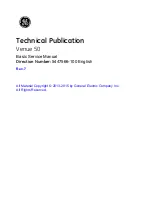
6
assigned a DMX address of 1 may be placed anywhere in a DMX line, at the beginning, at the end, or anywhere in
the middle. Therefore, the first fixture controlled by the controller could be the last fixture in the chain. When a
fixture is assigned a DMX address of 1, the DMX controller knows to send DATA assigned to address 1 to that unit,
no matter where it is located in the DMX chain.
Data Cable (DMX Cable) Requirements (For DMX and Master/Slave Operation):
The Inno Pocket Zoom 4
can be controlled via DMX-512 protocol. The Inno Pocket Zoom 4 three DMX channel modes; 10 channel mode ,
12 channel mode & 15 channel mode. The DMX address is set electronically using the controls on the front panel
of the unit. Your unit and your DMX controller require a approved DMX-512 110 Ohm Data cable for data input
and data output (Figure 1). We recommend Accu Cable DMX cables. If you are making your own cables, be sure to
use standard 110-120 Ohm shielded cable (This cable may be purchased at almost all professional sound and
lighting stores). Your cables should be made with a male and female XLR connector on either end of the cable.
Also remember that DMX cable must be daisy chained and cannot be split.
Notice:
Be sure to follow figures two and three when making your own cables. Do not use the ground lug on the
XLR connector. Do not connect the cable’s shield conductor to the ground lug or allow the shield conductor to
come in contact with the XLR’s outer casing. Grounding the shield could cause a short circuit and erratic behavior.
Special Note: Line Termination.
When longer runs of cable are used, you may need to use a terminator on
the last unit to avoid erratic behavior. A terminator is a 110-120 ohm 1/4 watt resistor which is connected
between pins 2 and 3 of a male XLR connector (DATA + and DATA -). This unit is inserted in the female
XLR connector of the last unit in your daisy chain to terminate the line. Using a cable terminator (MJ part
number Z-DMX/T) will decrease the possibilities of erratic behavior.


































